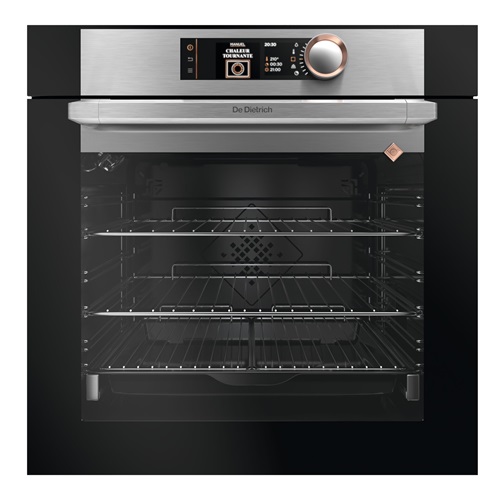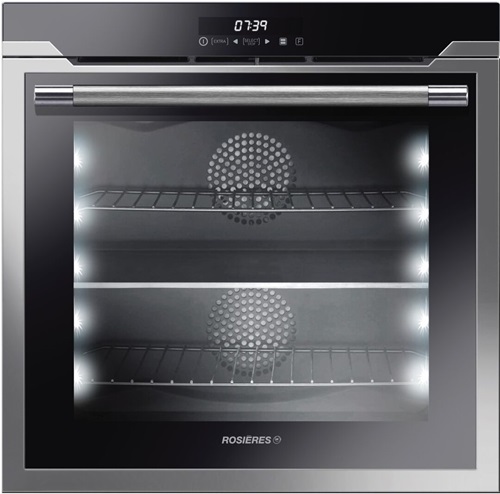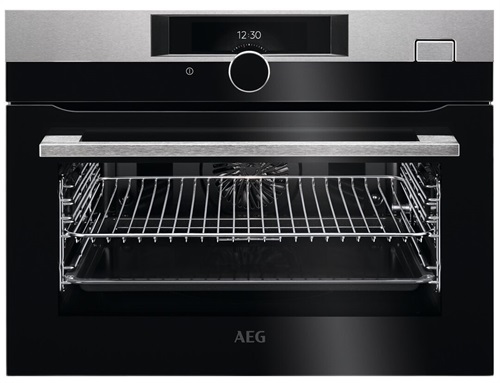
Choosing the Right Oven Cleaning Mode:
Pyrolytic, Catalytic, or Steam-Cleaning?
Confused about oven cleaning modes? Learn about pyrolytic, catalytic, and steam-cleaning ovens, their pros and cons, and make an informed choice for your kitchen.
When it comes to a new oven, understanding the cleaning options – pyrolytic, catalytic, or steam-cleaning – is crucial. While it might not be the sole determinant of your choice, knowing about these cleaning methods can significantly impact your decision. In this guide, we’ll delve into the details of each cleaning mode, highlighting their strengths and weaknesses, to help you select the oven that best aligns with your needs.
Pyrolytic Ovens: The Ultimate Self-Cleaning Solution

Pyrolysis, an automatic self-cleaning process, makes pyrolytic ovens stand out
How it works: The oven reaches a scorching temperature of 500°C, incinerating even the most stubborn dirt. You can program the duration of the pyrolytic cleaning cycle.
Advantages:
Impeccable Clean: Pyrolytic cleaning is the epitome of thoroughness, effectively tackling both grease and sugar residue.
Effortless: A quick wipe down of the residual ash post-cleaning leaves your oven impeccably clean.
Cost and Energy-Efficient: Schedule the pyrolytic cycle during off-peak hours or utilize residual heat for maximum energy efficiency.
Safety First: The oven’s door temperature remains safe during pyrolytic cleaning, reducing the risk of burns.
Disadvantages:
Premium Price: Pyrolytic ovens tend to be pricier due to their robust insulation and resistance requirements.
Intensive Energy Usage: The high temperatures demand more energy, impacting electricity bills.
Catalytic Ovens: Self-Degreasing Technology
Catalytic cleaning offers a self-degreasing solution.
How it works: The oven’s porous, rough-textured interior walls absorb cooking grease, with catalysis breaking down fat splatters at temperatures above 200°C.
Advantages:
Smart and Swift: A simple 10 to 15-minute session at maximum temperature after each use aids in self-cleaning.
Budget-Friendly: Catalytic ovens are a cost-effective alternative to pyrolytic models.
Disadvantages:
Manual Touch-Up Required: While catalysis helps, some manual cleaning is necessary, involving a sponge and degreasing agent.
Lesser Efficiency: Unlike pyrolysis, sugar residues aren’t reduced to ash, leading to a less thorough clean.
Limited Lifespan: Catalytic walls may require replacement after approximately 5 years of use.
Fragile Maintenance: Avoid abrasive products or aluminum foil to prevent irreversible damage.

Stem-cleaning Ovens

Steam-cleaning, or hydrolysis, is a simple, quick and ecological cleaning aid.
How it works: Steam cleaning is a simple process based on the “steam bath” effect, combining evaporation and condensation. The dirt in the oven turns soft and detaches easily, making it easier to clean the oven. Just pour 40 cl of water and a few drops of washing-up liquid onto the floor of the oven and set the programme control to hydrolysis.
Advantages:
Simplified Cleaning: Allow the process to run for just 30 minutes. Afterward, the softened dirt can be effortlessly wiped away using a sponge or cloth.
Economical and Eco-Friendly: Steam cleaning is energy-efficient, contributing to cost savings and reduced environmental impact.
Disadvantages:
Regular Cleaning Recommended: While steam cleaning helps, it’s advised to clean the oven after each use for optimal results and longevity.
Conclusion
Understanding the distinctions between pyrolytic, catalytic, and steam-cleaning ovens empowers you to make a well-informed decision based on your cleaning preferences, lifestyle, and budget. Pyrolytic ovens offer the epitome of cleanliness and convenience, while catalytic models balance affordability with self-degreasing technology. By weighing the pros and cons of each option, you can confidently choose an oven that perfectly suits your culinary needs and cleaning expectations.

Do you need advice on choosing your equipment?
Take advantage of the expertise of our designers-sellers
The Schmidt experience
Single point of contact
A dedicated designer that knows your project inside out, will manage everything.
Personalised advice
We’ll work closely with you to unlock the hidden potential in your home.
Free quotation & VR
Your project will come to life with a free detailed quote, 3D renders and VR experience.
Peace of mind
We’ll be with you from the initial planning to installation, and beyond.
